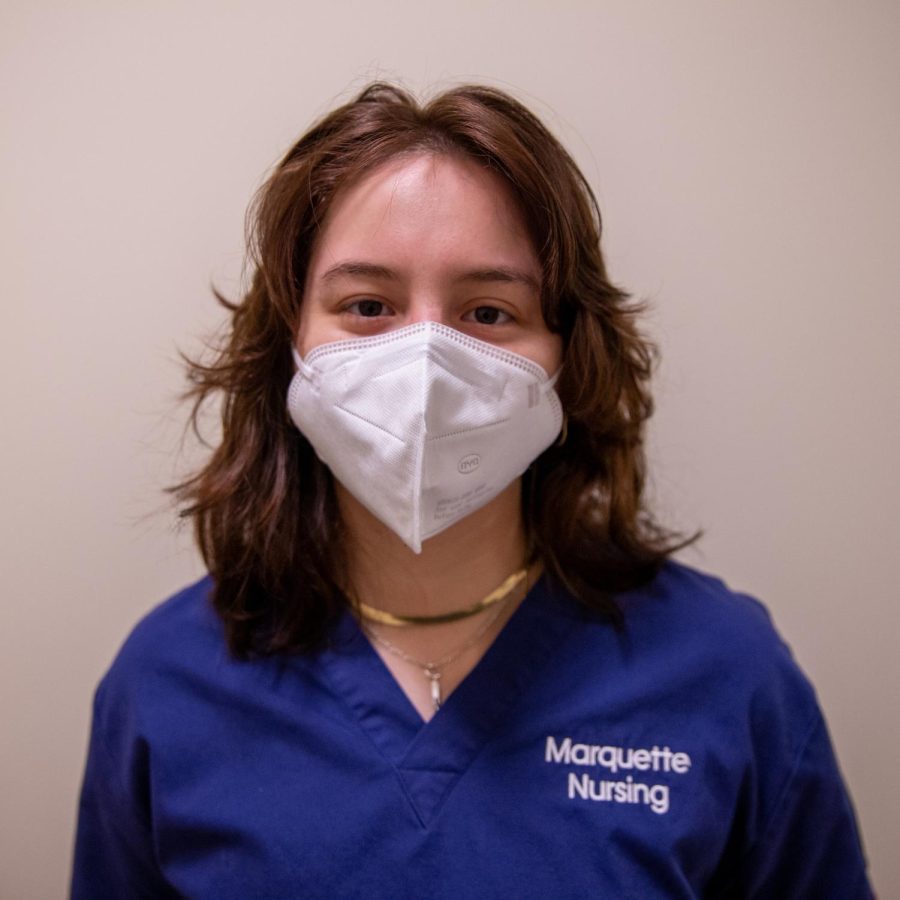As a Ph.D. student at Marquette, Jackie Christianson changed her career path after traveling to New York to help with the surge in March of 2020. This journey convinced Christianson to study burnout in nursing and the factors that contribute to healthcare fatigue.
“I decided to study burnout and the systemic attributes of the nursing workforce that contributes to burnout, instead of virtual education in health care as I was planning when I applied pre-pandemic,” Christianson said.
Christianson, throughout her career and her studies, has witnessed many contributing factors to fatigue in the healthcare environment.
“Workplaces with too few staff [and] high expectations upon people who provide care to ‘make do’ without adequate resources,” Christianson said.
Christianson said health care workers are not given enough resources to complete their jobs properly and yet are expected to complete their jobs anyway. Health care workers throughout the pandemic have been forced to work in inadequate conditions, with understaffed clinics and tight budgets, according to Christianson.
“Health care has been a hostile place to work since before I started — burnout, the constant squeeze of budgets versus patient needs, under compensating many health care workers for their essential work, violence toward health care workers, and other such issues have gotten worse during COVID, and we seem to finally be reaching a breaking point,” Christianson said.
These issues may contribute to the fact that one in five health care workers have quit their jobs since the pandemic started.
Christianson said health care workers have been stretched thin, and the pandemic has contributed to issues that were already unfolding until some have reached a breaking point.
“I’m not sold that COVID really introduced any new problems to the health care environment so much as it dialed up those issues,” Christianson said.
However, Christianson said COVID-19 only increased problems that were already ingrained in the system.
“The increase in incidence increased dramatically during COVID, the ice trucks at the beginning of the pandemic, to store bodies in because the morgues were full, were real — the hospital I was at in Queens had two of them parked in the back of the building,” Christianson said.
Some health care workers are struggling to adjust to the ever-changing conditions throughout the pandemic. Betsy Flasch has been a pediatric nurse since 2008 and became a pediatric nurse practitioner in 2013. She joined Marquette as a full-time faculty member in 2020.
Flasch explains how difficult it is to keep up with constantly changing guidelines, as health care workers must be ready to continue to learn and adjust.
“The hardest part of working through pandemic for me has been the frequently changing guidelines, needing masks, not needing masks, having a booster shot, but maybe we actually need a fourth booster, N95 masks are better, hybrid class format, learning new technology,” Flasch said.
Debra Casper is a nurse practitioner in the ICU at Froedtert Menomonee Falls Hospital and also works for Marquette as a director and clinical faculty member.
“Many providers and health care workers not only struggled due to physical exhaustion from long hours and extra shifts, but also from mental and emotional exhaustion due to numerous deaths, high patient acuity, need to ration care, and feelings of helplessness,” Casper said.
Casper also worried about the safety of her family.
“I was also concerned that I would bring the virus home from the hospital to my family and infect them. However, this is my job, my calling. I just had to be diligent in my practice and protection so that I could keep my family safe,” Casper said.
This story was written by Sarah Kuhns. She can be reached at sarah.kuhns@marquette.edu


